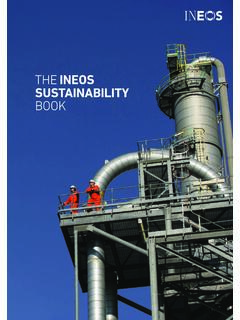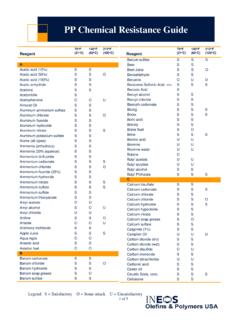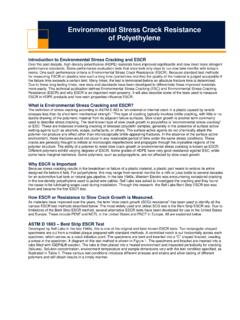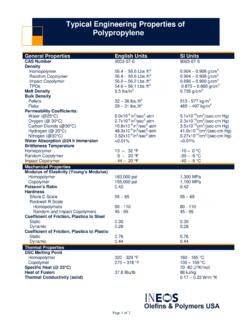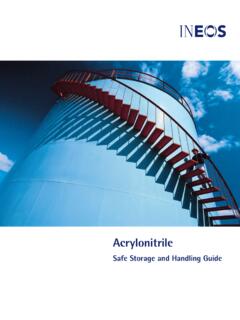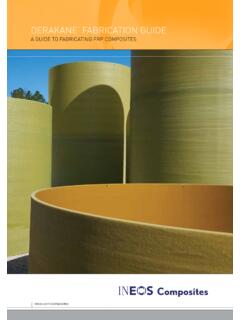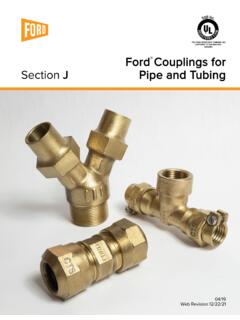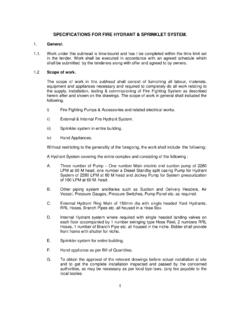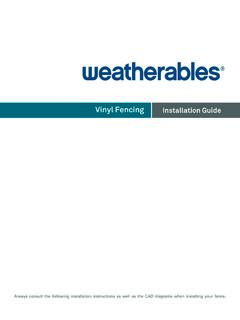Transcription of INEOS Polypropylene Processing Guide
1 Polypropylene Processing Guide 2 Table of Contents Introduction Part Design Wall thickness Design reinforcements Draft angle Shrinkage Sink marks Undercuts Integral hinges Mold Design Sprue Runner shapes and layout Gate types Gate location Integral hinge gates Mold temperature control Clamp requirements Knock outs Vents Material Selection Resin flow Molding Area Diagrams Antistat Nucleation Injection Molding Cylinder temperature Injection pressure Injection time Mold temperature Cure time Back pressure Screw speed Mold release Extrusion General Downstream Sheet Film Tape yarns Fiber Thermoforming / Solid Phase Forming Finishing Hot stamp printing Vacuum metalizing Surface treatment Gas flame Corona Discharge 3 3 5 6 7 8 9 10 10 11 Machining Properties Turning Chasing Sawing Drilling and tapping Milling and shaping Joining and Welding Methods Spin welding Hot gas welding Hot plate welding or butt welding Heated tool welding Thermal impulse sealing Ultrasonic welding Effects of Radiation Ultraviolet (UV) Microwave Gamma Internal Recycle Regrind Coloring Dry color Solid color concentrates Liquid color Injection Molding Troubleshooting Guide Regulatory and HSE Information 12 12 13 13 14 15 18 3 Introduction INEOS O&P's Polypropylene is a strong, lightweight thermoplastic that offers outstanding toughness, rigidity, and resistance to thermal deformation.
2 Fabricators and designers value these characteristics and have come to consider Polypropylene one of the most satisfactory thermoplastic resins for a wide range of applications. This unique material can be steam-sterilized or autoclaved without damage and resists environmental stress-cracking when subjected to most chemical tests. Several characteristics of Polypropylene enable thin section oriented moldings to have virtually unlimited flex life, making it an excellent material for integral hinges in molded parts. These properties include: fatigue resistance, ultimate tensile strength, and ultimate elongation. Polypropylene is highly responsive to injection speed and pressure and sets up quickly in the mold, enabling molders to attain high production rates. This combination of performance properties gives Polypropylene a position in the injection molding field that is unique among thermoplastics.
3 Polypropylene also demonstrates excellent chemical resistance, good abrasion resistance, good dimensional stability, and a high surface gloss on finished pieces. The versatility of this polymer makes it particularly well suited for film and fibers requiring superior strength, optical qualities, grease resistance, and moisture barrier properties. Part Design The design of an injected molded part must ensure functional performance without inducing production problems. The following text discusses some general areas of part design that warrant special attention. Wall thickness Typically wall thickness is determined after considering structural strength requirements, aesthetics, and economics (including material and production costs). It is desirable to keep wall thicknesses uniform and to avoid abrupt thickness changes.
4 Otherwise, part weakness and distortion due to corner notch effects and induced shrinkage stresses can result. If transition areas occur, they should be radiused or tapered to minimize stress concentrations and warpage tendencies. Design reinforcements To conserve material costs, structural stiffness can be obtained economically by using ribs, edge flanges, and contoured surfaces. Of these, the last two are preferred because they control warpage as well as add form rigidity. In all cases, rib-surface intersections and changes in surface direction must be formed by radii of at least 1/32 of an inch for wall thicknesses up to inches. From to inches, the minimum radius should be 1/16 of an inch. Draft angle Parts that are formed by plug-cavity type molds must carry draft on all sides to permit ejection.
5 A minimum draft angle of 1 degree per side is needed on smooth-surfaced parts made from unfilled homopolymers and copolymers to prevent seizing due to shrinkage forces. Textured surfaces require added draft to prevent scuffing and to permit easy mold release. Depending on the texture depth, the draft will be from 2 to 5 degrees for unfilled homopolymers and copolymers. Filled resins require more draft, ranging from 4 to 10 degrees. Moreover, their low shrinkage and high stiffness prevent the stripping of all but very minor undercuts. Shrinkage The linear mold shrinkage of injection molded parts will vary from to inches per inch, depending on the particular resin, molding conditions, part design, part wall thickness, and direction of flow. Figure 1 presents the shrinkage of Polypropylene versus wall thickness in injection molded parts.
6 These data were obtained from many and varied pieces molded from different grades of Polypropylene . Consequently, a range is shown for any wall thickness. For design purposes, the dotted line which represents the average shrinkage is a good starting point. 4 Sink marks A high-quality appearance requires minimum surface defects. Sink marks formed by local thick sections due to ribs, bosses, etc., are the most common problems. Sink marks can be virtually eliminated by keeping the rib base no more than 50% of the wall to which it is attached and not higher than times the wall thickness. 1) Height: 3W/2 2) Radius of base: W/8 3) Draft: degrees 4) Thickness: No more than W/2 (W is the thickness of the reinforced wall) The situation with bosses is different since heavy wall thicknesses are necessary for their intended use.
7 In such cases, surface texturing or designing in mask is needed to prevent sink marks from being seen. The above problems are minimal with the highly filled resins since their mold shrinkage values are low. They are comparable to ABS and other styrene-based thermoplastics in this respect. Undercuts Parts made from Polypropylene homopolymers and copolymers can be designed with undercuts that require stripping for release from the mold. Several qualifications must be kept in mind: Undercuts must be located so they are not trapped by mold metal, which will cause shearing. Undercut designs must use tapered or radiused form to ease the stripping action. The extent of the undercut should be not more than to inches per inch of diameter. Filled resins are not adaptable to stripping undercuts.
8 Integral hinges A living hinge is the most well-known capability of Polypropylene homopolymers and copolymers. Injection molded hinge design features are illustrated in Figure 2. Figure 2: Injection molded hinge design features L - hinge land length can be to ". H - hinge thickness ranges from to " depending on ease of closing desired. A-hinge clearance about " is satisfactory to prevent gathering. B - offset radius " minimum. This aids molding the hinge and also promotes alignment between lid and box. R - hinge radius to center the minimum hinge thickness and improve moldability. In molding problems, a heated post forming tool can be used to press hinges. Such hinges can show improved tear strength compared to injection molded hinges. A typical hinge pressing die design is illustrated in Figure 3.
9 Hinges can be formed in both filled and unfilled resins. Unfilled materials, however, yield stronger hinges with a better appearance. Figure 3: Typical hinge pressing die design 5 Mold Design All the basic mold, runner, and gating designs have been successfully used with Polypropylene from INEOS O&P. To take advantage of a well designed part, the following mold details should be considered. Sprue To prevent sprue sticking, highly tapered sides (3 to 5 degrees including angle) are required. It is also desirable to keep the sprue length down to 3 inches to help minimize ejection problems. Extended nozzles are used if the sprue length becomes objectionable. Various types of sprue pullers have been successfully used such as the hook, reverse taper, or groove. The latter two are preferred.
10 Runner shapes and layout All of the basic runner shapes (full round, half round and trapezoidal) are usable. The important factors are: Minimum runner diameter (or equivalent cross-sectional area) leading into a gate should be inches. This runner should never have a diameter less than the heaviest wall section in the part. Primary runners leading from the sprue to the sub runners should decrease in size at branch points. Balanced runner systems are desirable to promote simultaneous filling of multi-cavity molds. This technique can lead to extensive runner scrap generations. Other less balanced runner systems can be used for the sake of economy. In such cases, balancing can be assisted by stepping down the runners in the direction of flow and by adjusting gate sizes. Gate types All basic gate designs have been used with success in molds designed for Polypropylene .
